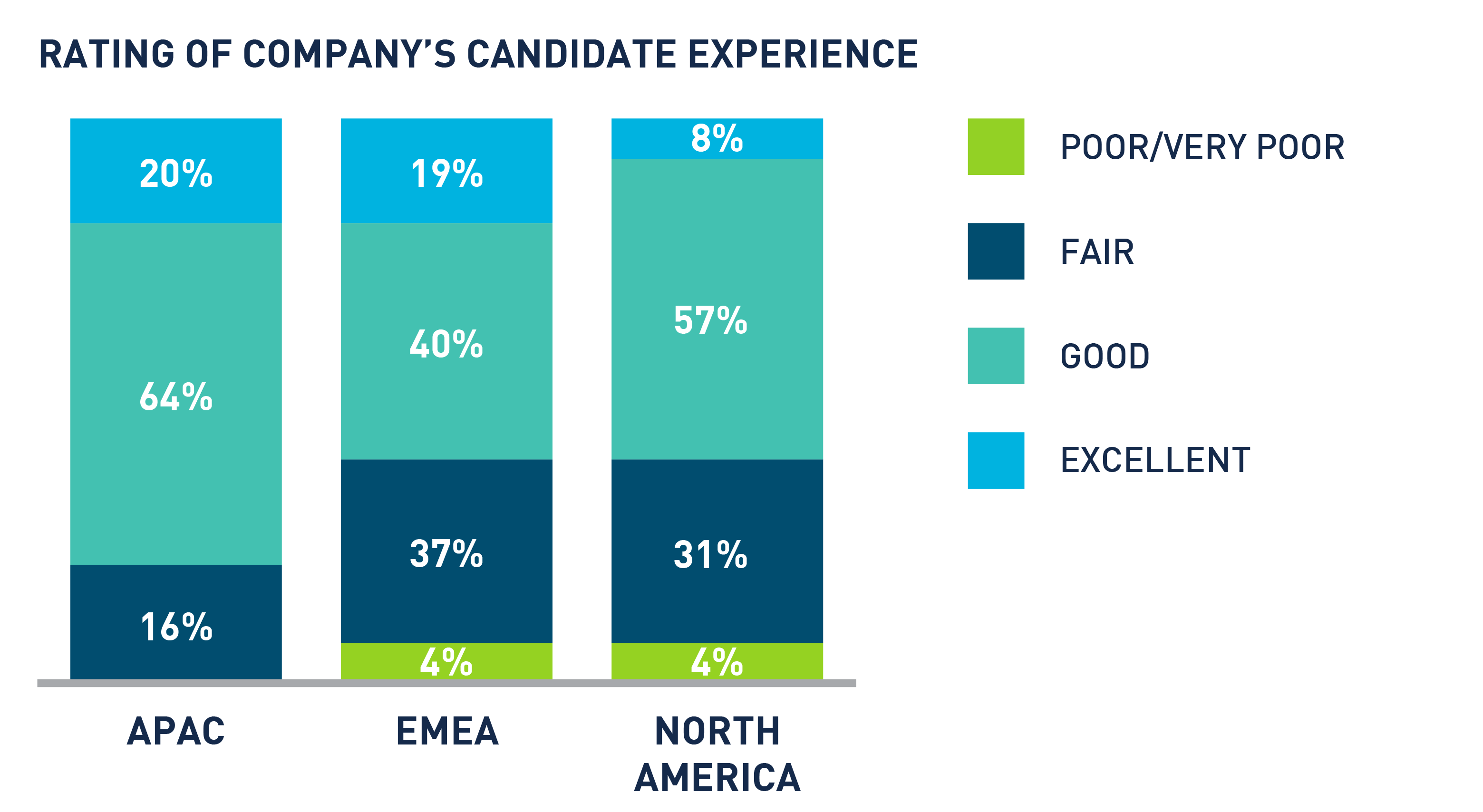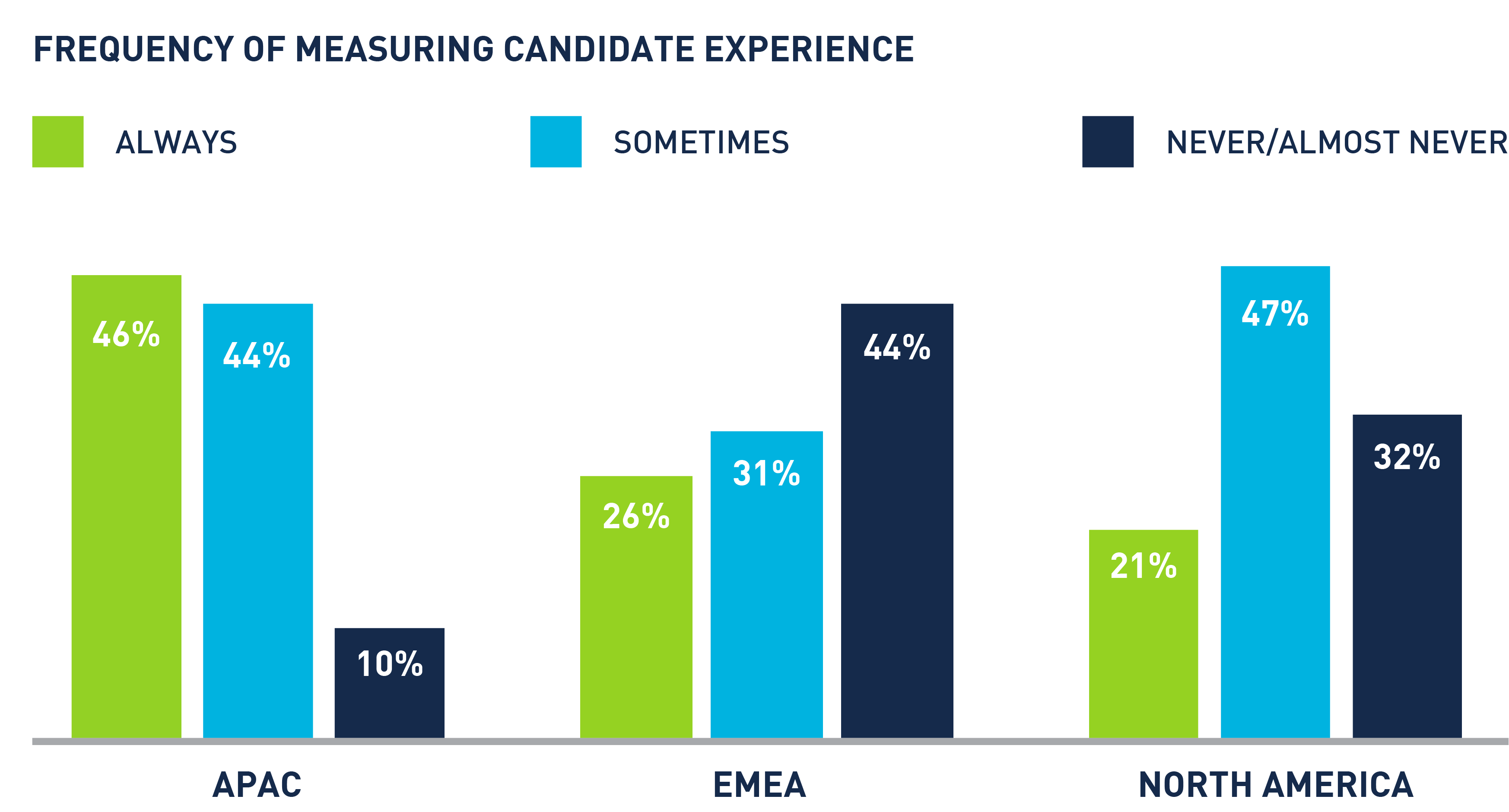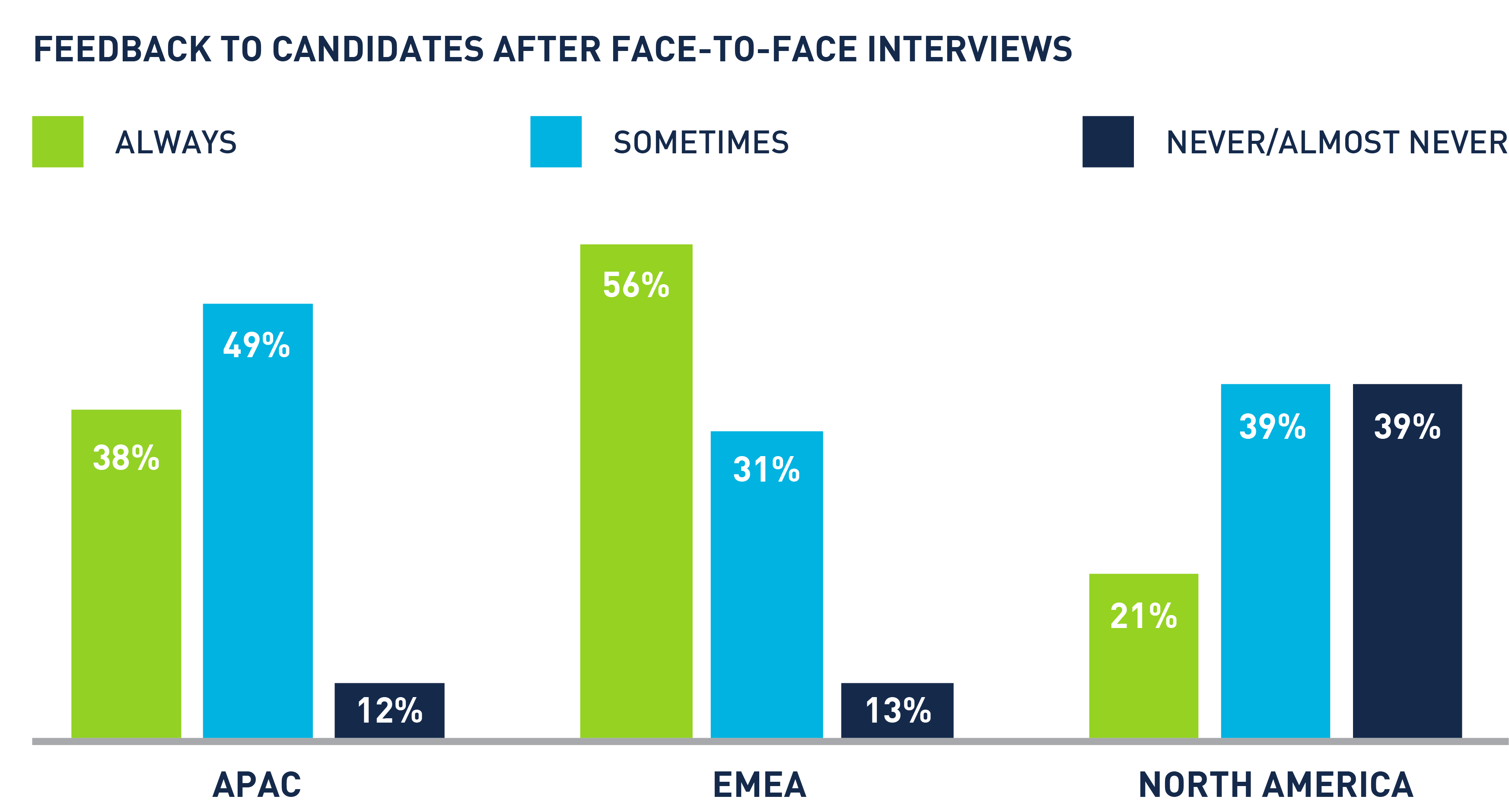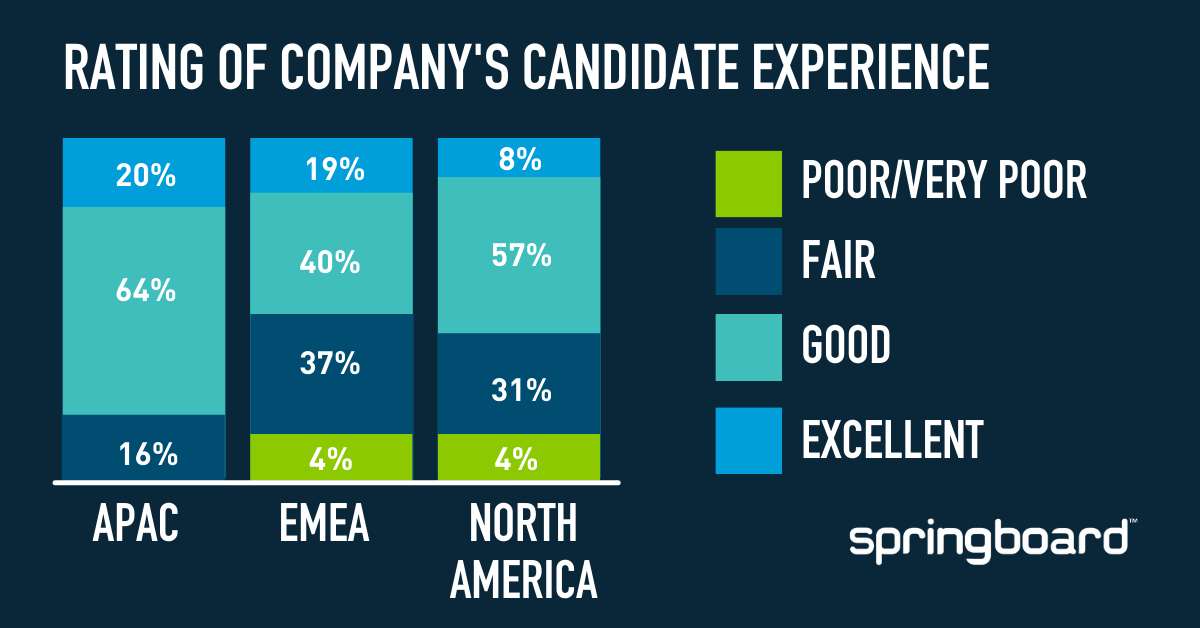A good candidate experience is based on a strong employer brand. But, many employers are missing basic steps that can have a drastic influence on how candidates perceive those organisations. In particular, they’re lacking processes to provide feedback to candidates and gather feedback from candidates.
In the recruitment process, feedback should go both ways. Employers should gather feedback from candidates about the experience, but they should also provide feedback – especially to candidates who make it deep into the selection process.
The Candidate Experience Gap
When employers around the globe rate the candidate experience they provide, they often give themselves good scores. However, when candidates are asked to rate their experience, they often have a very different opinion.
For example, in recent surveys by HRO Today 65% of companies in North America; 59% in Europe, the Middle East and Africa (EMEA); and 84% in Asia-Pacific (APAC) rated their candidate experience as “good” or “excellent.” At the same time, only 5% of candidates in both regions rated their experience as excellent.

That is a massive gap and, at the end of the day, it’s the candidate’s opinion that matters. That’s because the effect of a bad experience can be severe. In fact, research by Deloitte shows that 80% of disappointed candidates will share their experience – and that has serious consequences for an organisation’s employer brand.
Additionally, candidates are consumers. In research we completed with one of our telecom clients, we found that disappointed candidates actually canceled the service of that employer – and the potential impact of this was was worth millions of dollars to the bottom line based on the number of applications received in a typical year.
Finally, a bad candidate experience can also mean that employers miss out on the best talent. If another company offers a strong candidate a better experience, that candidate will likely choose that employer. This gap also illustrates that, while employers need to provide a good candidate experience, they also need the right metrics to determine just how good their experience is. And, where should that data be coming from? Candidate feedback.
Gathering Candidate Feedback
In the same HRO Today surveys, employers reported significant challenges in capturing candidate feedback. In EMEA, 39% of employers said that one of their top candidate experience challenges was that they had “no formal way to capture candidate feedback.” On the flip side, only 26% of respondents in EMEA always ask for candidate feedback, whereas 44% never ask for it.
In North America, the numbers are only slightly better. In that survey, 31% of respondents rated “no way to capture candidate feedback” as a top challenge. And, while 32% reported that they never asked for feedback, only 21% claimed that they always did.
Similarly, in APAC, 23% of respondents cited “no way to capture candidate feedback” as a top challenge. However, far more employers in the region said they already collected feedback. Specifically, 46% said that they always did, while just 10% reported that they never did.


Why is this so important? At Springboard, we work with clients to develop and test authentic employer value propositions and employer branding materials based on research, and a critical component of that research is understanding how candidates perceive an organisation. A strong employer brand evolves over time as talent acquisition teams constantly test small adjustments; without candidate feedback, employers won’t know if those adjustments resonate with candidates.
We all know the process for providing feedback in the consumer space. After we get food delivered, we get a pop-up on our phone asking if we liked the food and how the driver did. Likewise, if we purchase a new pair of jeans or a television, we receive an email asking us to write a review of the product. Companies can then use that information to improve their products and services.
In the same way, the practice of asking for feedback should be integrated throughout the candidate experience. This can mean a screen at the end of an application asking the candidate to rate the application. Or, it can be a short text sent to a candidate asking them to rate their virtual interviewing experience after they complete an on-demand interview. It could also be a short questionnaire sent after a candidate completes a final interview – asking if the interviewer was on time and prepared, or if the candidate felt as though they were able to showcase their strengths.
Providing Feedback
As important as it is to gather candidate feedback, the feedback flow can’t just move in one direction. Employers should also provide feedback – especially to candidates who make it to the final round of interviewing. Unfortunately, the likelihood of that is greatly dependent on location.
The HRO Today survey found that, in EMEA, more than half of respondents made it standard practice to provide feedback after a face-to-face interview, while only 13% of employers never provided it. However, the situation is vastly different in North America, where only 21% of employers reported that they always provided feedback, while 39% never did. In APAC, the numbers landed in the middle, with 38% of employers stating that they always provided feedback and 12% saying that they never did.

This is a significant missed opportunity for employers. By the time a candidate reaches the final interview stage, not only have they invested a considerable amount of time and effort into an organisation, but the employer has also poured a considerable amount of time, effort and money into recruiting this candidate. As such, a candidate who has invested so much time and effort into an employer can only feel an even deeper sting from a rejection, as compared to a candidate who failed to advance earlier in the process. Plus, in Europe, one survey found that candidates ranked providing feedback and providing a reason for rejection as two of the top three most important components in delivering a positive candidate experience. The only other factor in the top three was providing a short, easy application.
Additionally, by the time a candidate reaches the final interview, the recruiter and hiring manager have clearly seen potential for that candidate to be a great employee. And, while a candidate who finishes in second or third place in the recruitment process may not be the best fit for that role at that time, the candidate still has the potential to be a great employee at some point in the future. This makes it even more critical to provide meaningful feedback.
More precisely, providing feedback at this point in the process accomplishes two major things for candidates: First, it provides candidates with something in exchange for the time and effort they’ve put into your organisation. While the candidate may or may not have received a job offer, feedback that they can use as they move forward in their career is the next-best outcome; often, candidates may receive a generic email or – even worse – no communication at all. Additionally, the feedback provides candidates with actionable steps that they can take going forward if they want to apply to your company again in the future. If the candidate was a close match, the feedback you provide after this interview could help them become the ideal candidate the next time they apply.
Feedback Loop
These surveys reveal critical information about the importance of feedback – both gathering it from candidates and providing it to candidates – at a critical time for employers. With high unemployment across the globe due to COVID-19 and the upcoming “Great Rehire” as world economies recover, employers are already seeing large application volumes and will soon see increased competition for talent.
That combination makes a good candidate experience especially important: When a large number of candidates have a bad experience, it can do significant damage to an organisation’s employer brand. Furthermore, the best candidates won’t stay on the job market for long. A poor experience can mean losing out on the best talent at a time when the right people can aid in a strong recovery. Therefore, now is the best time for employers to develop their processes for giving and receiving feedback.




